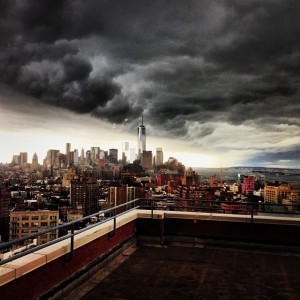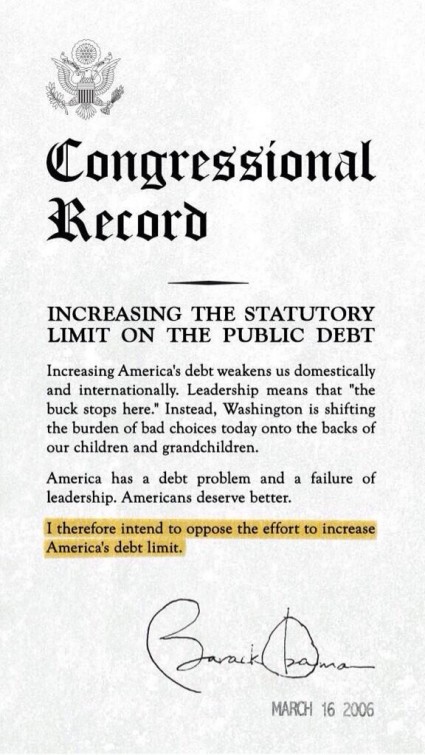 When is the U.S. banking system going to crash? I can sum it up in three words. Watch the derivatives. It used to be only four, but now there are five “too big to fail” banks in the United States that each have more than 40 trillion dollars in exposure to derivatives. Today, the U.S. national debt is sitting at a grand total of about 17.7 trillion dollars, so when we are talking about 40 trillion dollars we are talking about an amount of money that is almost unimaginable. And unlike stocks and bonds, these derivatives do not represent “investments” in anything. They can be incredibly complex, but essentially they are just paper wagers about what will happen in the future. The truth is that derivatives trading is not too different from betting on baseball or football games. Trading in derivatives is basically just a form of legalized gambling, and the “too big to fail” banks have transformed Wall Street into the largest casino in the history of the planet. When this derivatives bubble bursts (and as surely as I am writing this it will), the pain that it will cause the global economy will be greater than words can describe.
When is the U.S. banking system going to crash? I can sum it up in three words. Watch the derivatives. It used to be only four, but now there are five “too big to fail” banks in the United States that each have more than 40 trillion dollars in exposure to derivatives. Today, the U.S. national debt is sitting at a grand total of about 17.7 trillion dollars, so when we are talking about 40 trillion dollars we are talking about an amount of money that is almost unimaginable. And unlike stocks and bonds, these derivatives do not represent “investments” in anything. They can be incredibly complex, but essentially they are just paper wagers about what will happen in the future. The truth is that derivatives trading is not too different from betting on baseball or football games. Trading in derivatives is basically just a form of legalized gambling, and the “too big to fail” banks have transformed Wall Street into the largest casino in the history of the planet. When this derivatives bubble bursts (and as surely as I am writing this it will), the pain that it will cause the global economy will be greater than words can describe.
If derivatives trading is so risky, then why do our big banks do it?
The answer to that question comes down to just one thing.
Greed.
The “too big to fail” banks run up enormous profits from their derivatives trading. According to the New York Times, U.S. banks “have nearly $280 trillion of derivatives on their books” even though the financial crisis of 2008 demonstrated how dangerous they could be…
American banks have nearly $280 trillion of derivatives on their books, and they earn some of their biggest profits from trading in them. But the 2008 crisis revealed how flaws in the market had allowed for dangerous buildups of risk at large Wall Street firms and worsened the run on the banking system.
The big banks have sophisticated computer models which are supposed to keep the system stable and help them manage these risks.
But all computer models are based on assumptions.
And all of those assumptions were originally made by flesh and blood people.
When a “black swan event” comes along such as a war, a major pandemic, an apocalyptic natural disaster or a collapse of a very large financial institution, these models can often break down very rapidly.
For example, the following is a brief excerpt from a Forbes article that describes what happened to the derivatives market when Lehman Brothers collapsed back in 2008…
Fast forward to the financial meltdown of 2008 and what do we see? America again was celebrating. The economy was booming. Everyone seemed to be getting wealthier, even though the warning signs were everywhere: too much borrowing, foolish investments, greedy banks, regulators asleep at the wheel, politicians eager to promote home-ownership for those who couldn’t afford it, and distinguished analysts openly predicting this could only end badly. And then, when Lehman Bros fell, the financial system froze and world economy almost collapsed. Why?
The root cause wasn’t just the reckless lending and the excessive risk taking. The problem at the core was a lack of transparency. After Lehman’s collapse, no one could understand any particular bank’s risks from derivative trading and so no bank wanted to lend to or trade with any other bank. Because all the big banks’ had been involved to an unknown degree in risky derivative trading, no one could tell whether any particular financial institution might suddenly implode.
After the last financial crisis, we were promised that this would be fixed.
But instead the problem has become much larger.
When the housing bubble burst back in 2007, the total notional value of derivatives contracts around the world had risen to about 500 trillion dollars.
According to the Bank for International Settlements, today the total notional value of derivatives contracts around the world has ballooned to a staggering 710 trillion dollars ($710,000,000,000,000).
And of course the heart of this derivatives bubble can be found on Wall Street.
What I am about to share with you is very troubling information.
I have shared similar numbers in the past, but for this article I went and got the very latest numbers from the OCC’s most recent quarterly report. As I mentioned above, there are now five “too big to fail” banks that each have more than 40 trillion dollars in exposure to derivatives…
JPMorgan Chase
Total Assets: $2,476,986,000,000 (about 2.5 trillion dollars)
Total Exposure To Derivatives: $67,951,190,000,000 (more than 67 trillion dollars)
Citibank
Total Assets: $1,894,736,000,000 (almost 1.9 trillion dollars)
Total Exposure To Derivatives: $59,944,502,000,000 (nearly 60 trillion dollars)
Goldman Sachs
Total Assets: $915,705,000,000 (less than a trillion dollars)
Total Exposure To Derivatives: $54,564,516,000,000 (more than 54 trillion dollars)
Bank Of America
Total Assets: $2,152,533,000,000 (a bit more than 2.1 trillion dollars)
Total Exposure To Derivatives: $54,457,605,000,000 (more than 54 trillion dollars)
Morgan Stanley
Total Assets: $831,381,000,000 (less than a trillion dollars)
Total Exposure To Derivatives: $44,946,153,000,000 (more than 44 trillion dollars)
And it isn’t just U.S. banks that are engaged in this type of behavior.
As Zero Hedge recently detailed, German banking giant Deutsche Bank has more exposure to derivatives than any of the American banks listed above…
Deutsche has a total derivative exposure that amounts to €55 trillion or just about $75 trillion. That’s a trillion with a T, and is about 100 times greater than the €522 billion in deposits the bank has. It is also 5x greater than the GDP of Europe and more or less the same as the GDP of… the world.
For those looking forward to the day when these mammoth banks will collapse, you need to keep in mind that when they do go down the entire system is going to utterly fall apart.
At this point our economic system is so completely dependent on these banks that there is no way that it can function without them.
It is like a patient with an extremely advanced case of cancer.
Doctors can try to kill the cancer, but it is almost inevitable that the patient will die in the process.
The same thing could be said about our relationship with the “too big to fail” banks. If they fail, so do the rest of us.
We were told that something would be done about the “too big to fail” problem after the last crisis, but it never happened.
In fact, as I have written about previously, the “too big to fail” banks have collectively gotten 37 percent larger since the last recession.
At this point, the five largest banks in the country account for 42 percent of all loans in the United States, and the six largest banks control 67 percent of all banking assets.
If those banks were to disappear tomorrow, we would not have much of an economy left.
But as you have just read about in this article, they are being more reckless than ever before.
We are steamrolling toward the greatest financial disaster in world history, and nobody is doing much of anything to stop it.
Things could have turned out very differently, but now we will reap the consequences for the very foolish decisions that we have made.

